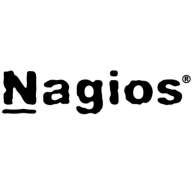

Nagios XI and NetApp Cloud Insights are significant players in network monitoring and analytics. In terms of features, NetApp Cloud Insights generally stands out due to its advanced analytics and ease of understanding complex data environments.
Features: Nagios XI offers robust open-source monitoring, extensive customization, and scalability through plugins, allowing oversight of network services and CPU utilization. NetApp Cloud Insights provides advanced analytics, interdependency mapping, and proactive decision-making capabilities across various vendor environments.
Room for Improvement: Nagios XI requires additional plugins for full functionality and lacks clustering and failover capabilities. Users mention a need for better integration, a more user-friendly GUI, and enhanced cloud system support. NetApp Cloud Insights can improve its reporting features, intuitive querying, and ease of integrating additional data points. The pricing model for non-NetApp systems is also considered inefficient.
Ease of Deployment and Customer Service: Nagios XI supports private, public, and hybrid cloud deployments, although setup can be complex. While community support is strong, official support may incur high costs. NetApp Cloud Insights supports hybrid and multi-cloud environments but could benefit from better integration support. Technical support is generally responsive but needs to be more intuitive and detailed.
Pricing and ROI: Nagios XI, being open-source, allows for cost-effective deployment, although its commercial support might be expensive. Its favorable ROI comes from decreased manual monitoring efforts. NetApp Cloud Insights offers free functionality with NetApp products but is criticized for a complex licensing model when extended beyond NetApp systems. Despite high costs, its potential ROI through better resource utilization is notable.


Nagios XI provides monitoring of all mission-critical infrastructure components, including applications, services, operating systems, network protocols, systems metrics, and network infrastructure. Third-party add-ons provide tools for monitoring virtually all in-house and external applications, services, and systems.
Nagios XI uses a powerful Core 4 monitoring engine that provides users with the highest levels of server monitoring performance. This high degree of performance enables nearly limitless scalability and monitoring powers.
With Nagios XI, stakeholders can check up on their infrastructure status using the role-based web interface. Sophisticated dashboards enable access to monitoring information and third-party data. Administrators can easily set up permissions so users can only access the infrastructure they are authorized to view.
Nagios XI Benefits and Features
Some of the benefits and top features of using Nagios XI include:
Reviews from Real Users
Nagios XI stands out among its competitors for a number of reasons. Several major ones are its integration options and monitoring abilities, as well as its alerting features.
David P., a senior DevOps engineer at EML Payments Ltd, writes, “We use Nagios as a network discovery tool. We use Nagios to maintain our uptime statistics and to monitor our services. It has allowed us to be much more sophisticated in our monitoring and alerting.”
An IT-OSS manager at a comms service provider notes, “Nagios XI has a custom API feature, and we can expose custom APIs for our integration. This is a great feature.”
NetApp Cloud Insights is an infrastructure monitoring tool that gives you visibility into your complete infrastructure. With Cloud Insights, you can monitor, troubleshoot and optimize all your resources including your public clouds and your private data centers.
We monitor all IT Infrastructure Monitoring reviews to prevent fraudulent reviews and keep review quality high. We do not post reviews by company employees or direct competitors. We validate each review for authenticity via cross-reference with LinkedIn, and personal follow-up with the reviewer when necessary.